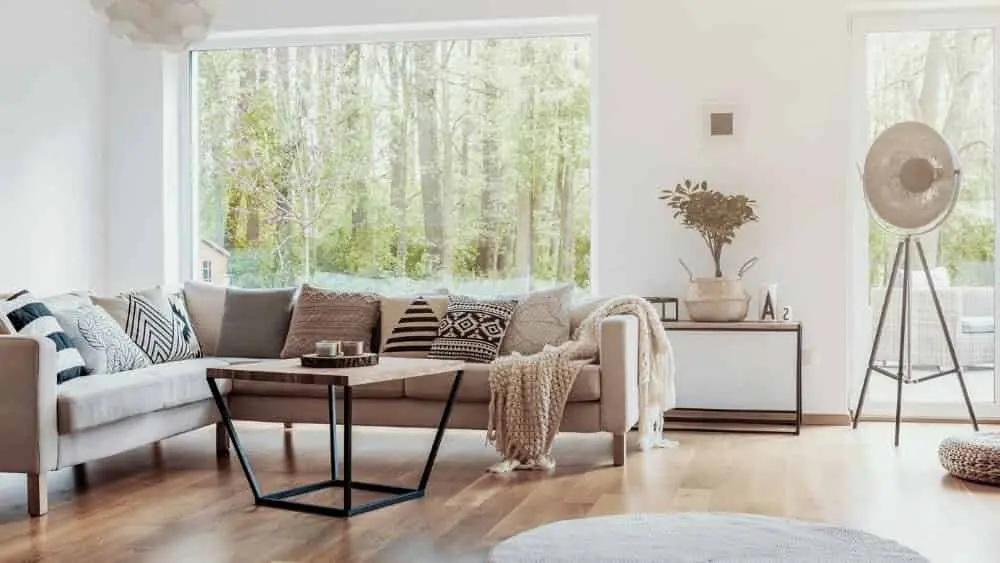
If you spend any time online looking at photos of newly designed homes, you’ve probably seen what many people call a “NanaWall”, a floor-to-ceiling folding or sliding glass wall that opens up an entire wall to the outdoors.
“NanaWall Systems” is the original manufacturer of accordion-style glass walls that were initially designed 30 years ago for commercial spaces, says Matt Thomas, marketing manager for NanaWall Systems.
While the trend of completely open indoor-outdoor rooms started in Hawaii and California, where the weather naturally accommodates year-round outdoor living, the use of disappearing glass walls has expanded to some unexpected markets. Thomas says that NanaWall’s largest market is Los Angeles, but their second largest market is New England.
“The NanaWall allows people to have a California lifestyle even though they live in places with weather extremes,” says Thomas. “Even in winter, when the walls need to stay closed, you gain natural sunlight and passive heat from the winter sun and unobstructed views.”
Shading systems and glazing can be added to the windows to handle extremely sunny and hot days, too.
“People are investing a lot of money in their outdoor spaces, putting in full kitchens, fireplaces and expensive furniture, so they want to be able to use it as much as possible and to see it as much as possible,” says Jon Phelps, brand public relations manager for Andersen Windows.
Interestingly, despite the trendiness of expanding options for indoor/outdoor living, a recent survey by the National Association of Home Builders found that 31 percent of prospective homebuyers categorically rejected a glass wall system that opens a large section of a wall to the outdoors. When broken down by generation, senior buyers were the least enamored of glass wall systems, with 45 percent saying they wouldn’t want one, compared to just 17 percent of Millennial buyers.
Buyers who do want a glass wall will find it easier to install one as part of a newly built home, but it’s possible to add one during a remodeling project, too.
Options for Glass Walls
While it may seem as if walls of glass fit only contemporary-style homes, they actually suit a variety of styles, says Jim Rill, owner of Rill Architects.
“Walls of glass integrate well even with traditional homes because they have minimal material other than glass and therefore don’t interrupt the style around them,” says Rill. “Instead of installing two sets of French doors with mullions, you can open up the space with pure glass.”
There are several main styles of glass walls, says Phelps, including doors that glide open and disappear entirely into an adjacent wall; glass panels with hinges that fold flat when open; curved glass doors that follow the arc of the wall in a contemporary home and corner doors that meet seamlessly and glide open in two different directions.
“A surprising aspect of these doors is how easy they are to operate,” says Phelps. “Because of their massive size, people often think they are difficult to move, but the gliding doors can be pushed with a touch of your finger.”
Thomas says that glass walls are “floor-supported,” with all their weight at the bottom and are engineered with a stainless-steel roller system that makes them easy to operate with one hand, even if the panels weight 200 or 300 pounds.
Depending on where you live, you may want to install rolling screens along with your glass walls to protect your home from bugs.
“Unless you live in perfect climate that doesn’t have bugs, you’ll want screens that can disappear into pockets or above the glass when you want the walls closed but are available when you want to be inside with fresh air flowing in,” says Rill.
Phelps says most of their buyers choose to screen only a portion of their window, such as one panel in a five-panel set so as not to lose the indoor-outdoor flow.
Cost of Glass Walls
Rill says glass walls are available from a wide range of manufacturers at different price points.
“Our glass walls are all custom-built, but it’s possible to purchase a relatively small one for under $10,000 and even in some cases $5,000,” says Thomas. “The price depends on the height and width of the glass doors and the way they are installed. Of course, we also manufacture glass walls for multi-million homes that cost in the hundreds of thousands because of their size.”
Phelps says buyers should compare products based on their energy-efficiency ratings and warranty and the reputation of the supplier rather than just on cost.
“A lot of engineering goes into these glass walls and buyers should look at them as a long-term investment,” says Phelps. “It’s like comparing an economy car with a pick-up truck, with the more solidly built glass walls designed for reliability and to handle more activity and weight.”
Energy-Efficiency and Durability
Glass wall systems are constantly being improved for greater energy-efficiency and to withstand high winds, says Rill. They are typically tested and rated so you can choose them based on weather conditions in your area.
“Our glass walls are all custom-designed, so we make them to withstand extreme weather from hurricanes to extreme cold,” says Thomas. “We even have a BEARricade product for mountain regions that resist the ability of bears to push in panels.”
Most glass wall systems also have a multipoint locking system with steel rods that lock the panels in place at the top and the bottom, Thomas says.
Glass walls also come with a variety of sills from traditional window sills to completely flat sills that allow you to transition from inside to the outdoors across a smooth surface when the doors are open, Thomas says.
Whether you want to provide easier access to your patio, a swimming pool or a deck or you just want an obstructed view, a glass wall could be your window to a new lifestyle integrating your indoor and outdoor space.

Michele Lerner is an award-winning freelance writer, editor and author who has been writing about real estate, personal finance and business topics for more than two decades.
 Builder or Architect? Pick Your “Go To” Professional
Builder or Architect? Pick Your “Go To” Professional